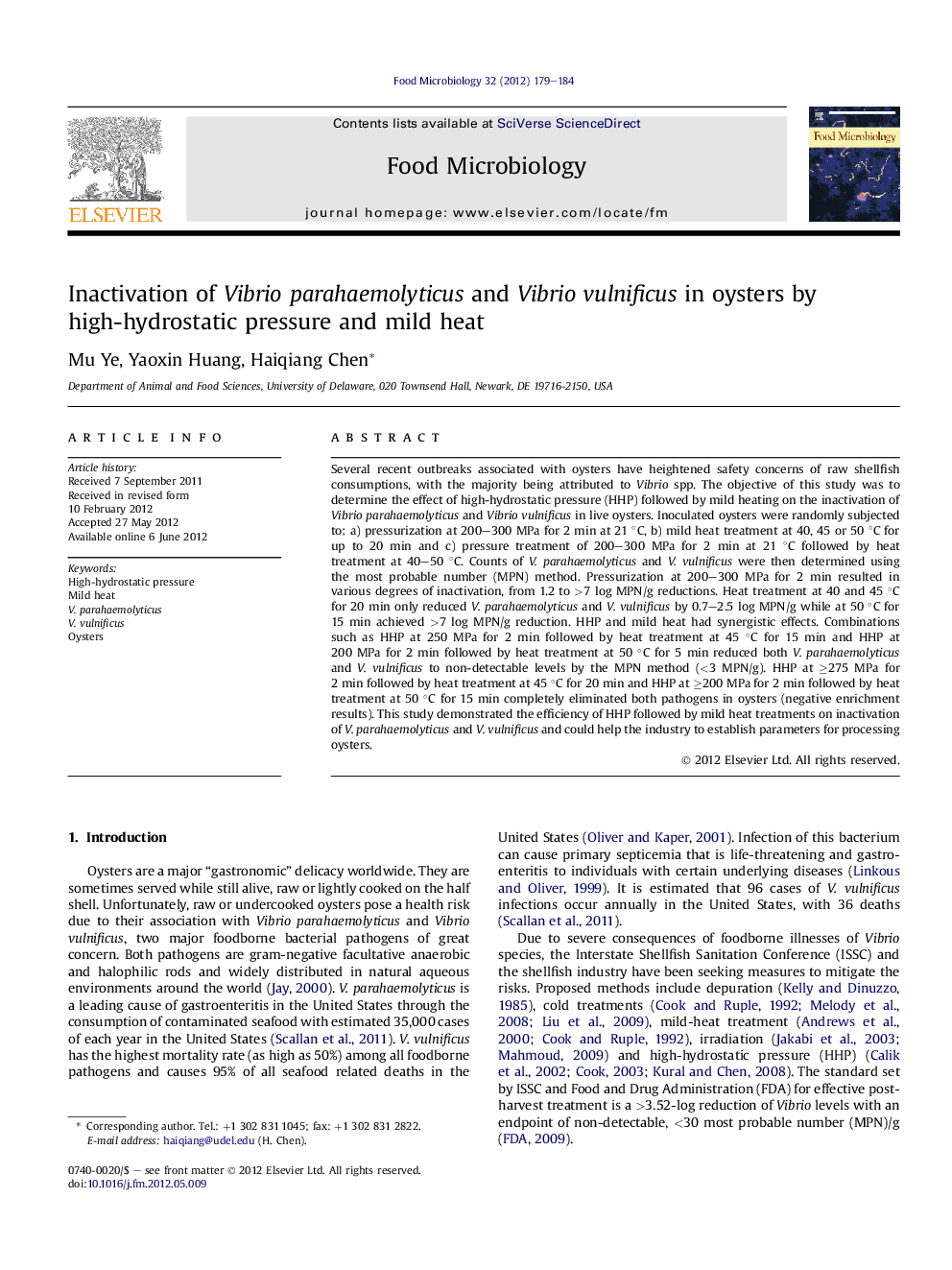| Article ID | Journal | Published Year | Pages | File Type |
|---|---|---|---|---|
| 4363062 | Food Microbiology | 2012 | 6 Pages |
Several recent outbreaks associated with oysters have heightened safety concerns of raw shellfish consumptions, with the majority being attributed to Vibrio spp. The objective of this study was to determine the effect of high-hydrostatic pressure (HHP) followed by mild heating on the inactivation of Vibrio parahaemolyticus and Vibrio vulnificus in live oysters. Inoculated oysters were randomly subjected to: a) pressurization at 200–300 MPa for 2 min at 21 °C, b) mild heat treatment at 40, 45 or 50 °C for up to 20 min and c) pressure treatment of 200–300 MPa for 2 min at 21 °C followed by heat treatment at 40–50 °C. Counts of V. parahaemolyticus and V. vulnificus were then determined using the most probable number (MPN) method. Pressurization at 200–300 MPa for 2 min resulted in various degrees of inactivation, from 1.2 to >7 log MPN/g reductions. Heat treatment at 40 and 45 °C for 20 min only reduced V. parahaemolyticus and V. vulnificus by 0.7–2.5 log MPN/g while at 50 °C for 15 min achieved >7 log MPN/g reduction. HHP and mild heat had synergistic effects. Combinations such as HHP at 250 MPa for 2 min followed by heat treatment at 45 °C for 15 min and HHP at 200 MPa for 2 min followed by heat treatment at 50 °C for 5 min reduced both V. parahaemolyticus and V. vulnificus to non-detectable levels by the MPN method (<3 MPN/g). HHP at ≥275 MPa for 2 min followed by heat treatment at 45 °C for 20 min and HHP at ≥200 MPa for 2 min followed by heat treatment at 50 °C for 15 min completely eliminated both pathogens in oysters (negative enrichment results). This study demonstrated the efficiency of HHP followed by mild heat treatments on inactivation of V. parahaemolyticus and V. vulnificus and could help the industry to establish parameters for processing oysters.
► Heating at 40–45 °C was not effective against Vibrio parahaemolyticus and Vibrio vulnificus. ► Mild heat synergistically enhanced pressure inactivation of the pathogens. ► Combination of mild pressure levels and mild heat could eliminate both pathogens.
